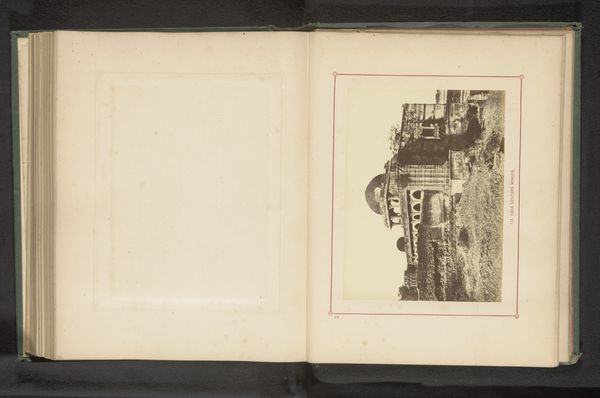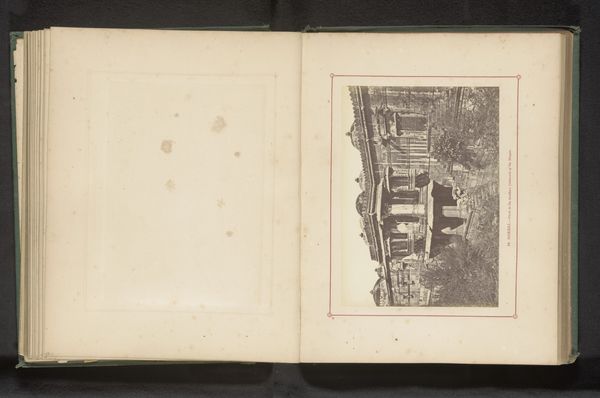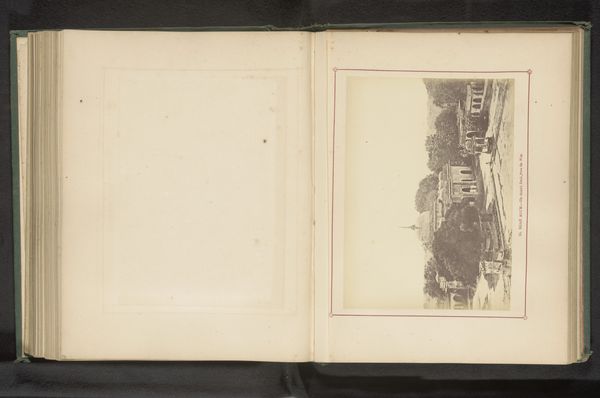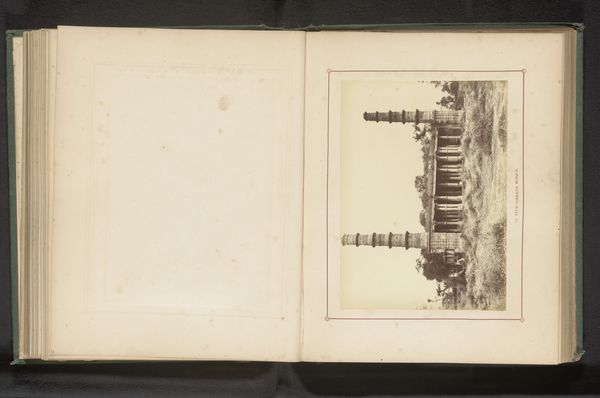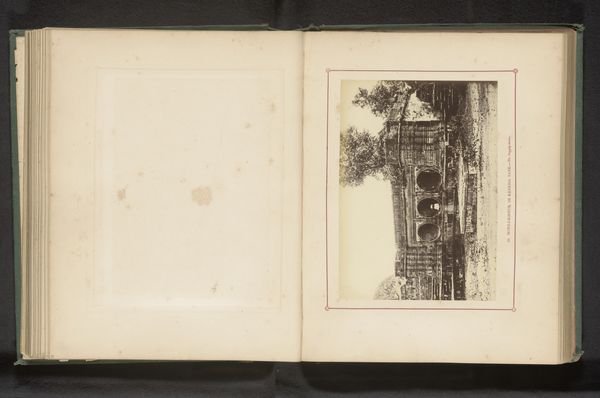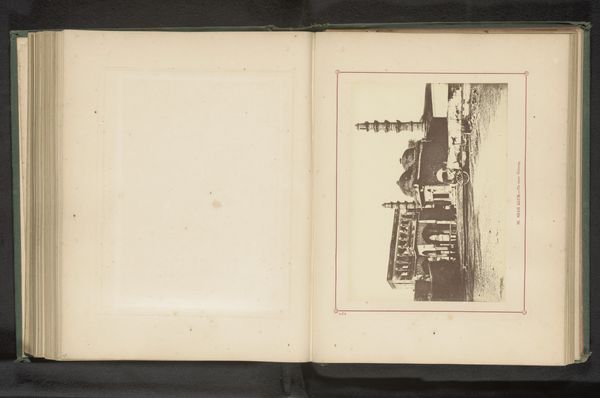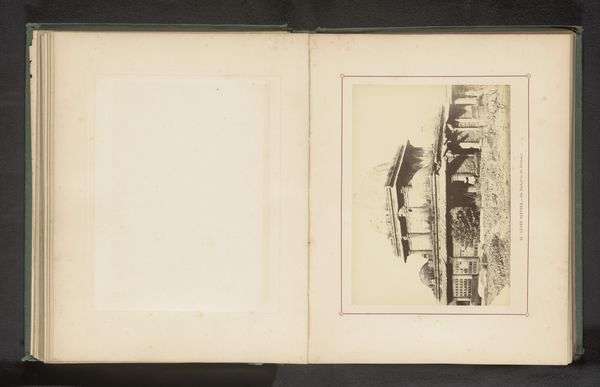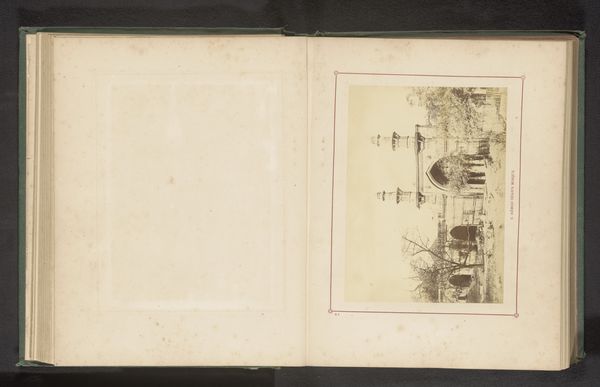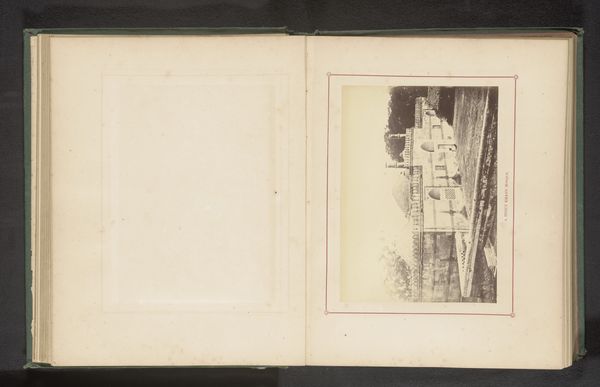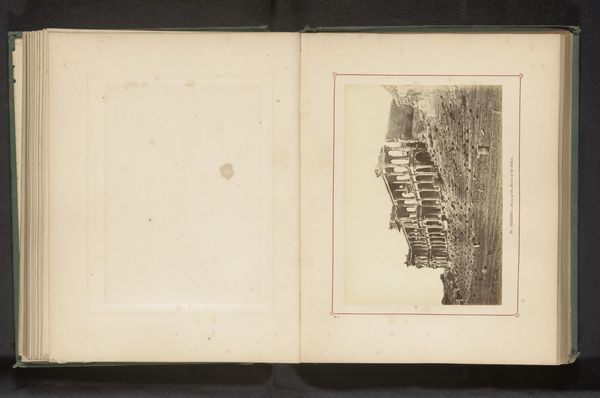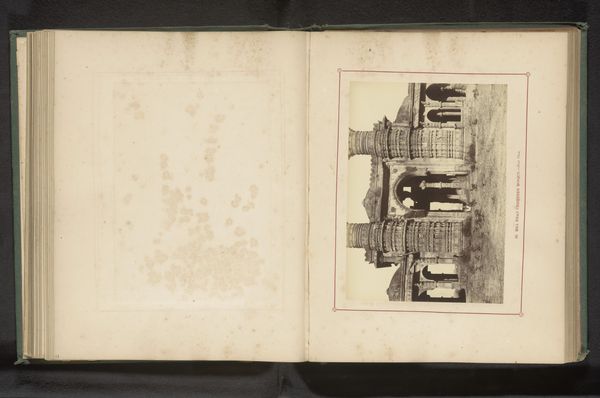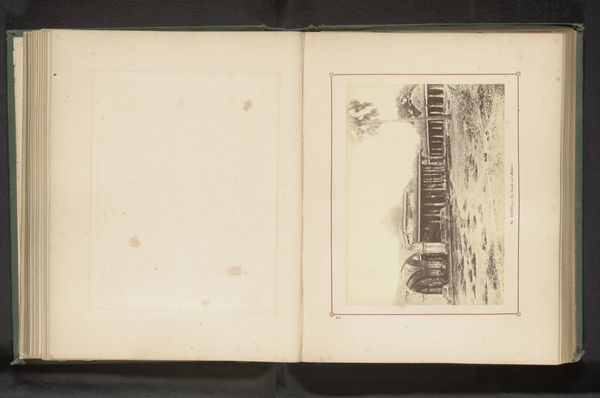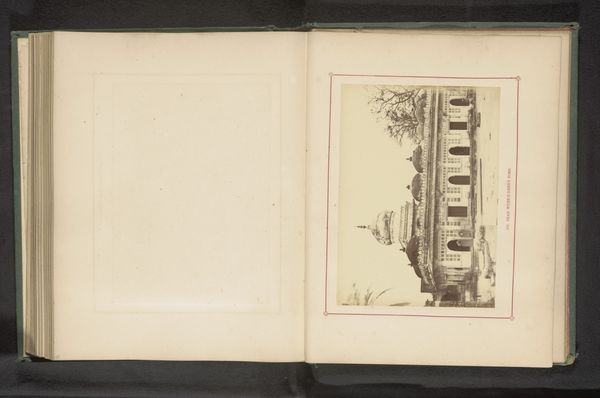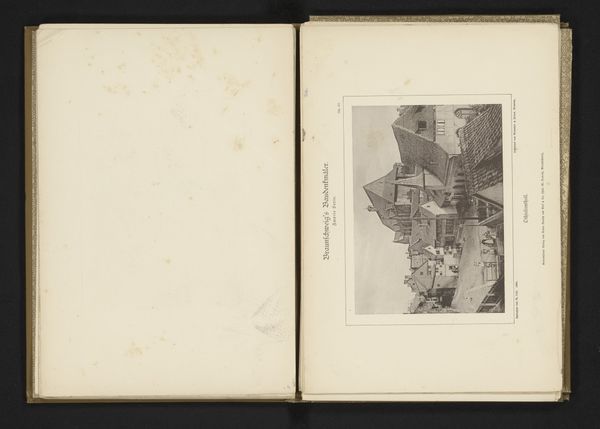
photography, albumen-print
#
aged paper
#
toned paper
#
photography
#
coloured pencil
#
pen and pencil
#
cityscape
#
islamic-art
#
albumen-print
Dimensions: height 136 mm, width 189 mm
Copyright: Rijks Museum: Open Domain
This photograph shows the Poort or gate of Shah-e-Alam's Roza in Ahmedabad, India. Although the date of its creation is unknown, Thomas Biggs worked as a photographer for the East India Company during the mid-19th century. Religious monuments, such as this one, are deeply embedded in the social and cultural fabric of the area, acting as more than just places of worship, but also serving as landmarks, community gathering points, and symbols of cultural identity. During British colonial rule, photographs like this one served to document the architectural and cultural heritage of India, often reflecting the interests and perspectives of the colonizers. The level of detail captured in this image offers valuable insights into the architectural styles and construction techniques prevalent at the time. Examining archival records, historical accounts, and studies of colonial photography will help us to better understand its significance. It is through this contextualization that we can reveal the complex interplay between art, history, and society.
Comments
No comments
Be the first to comment and join the conversation on the ultimate creative platform.
